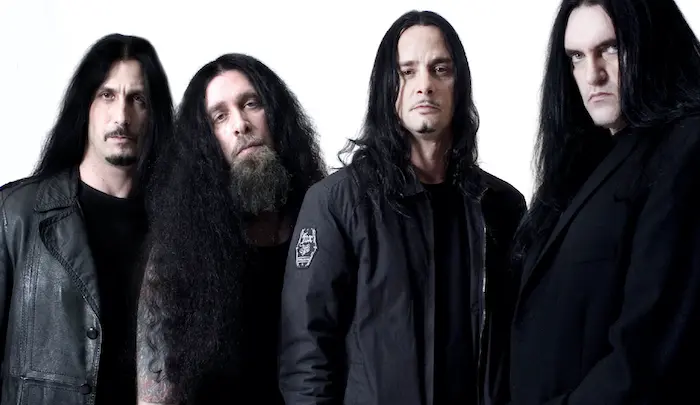Type O Negative is a name that resonates with fans of doom metal, gothic metal, and alternative rock. Emerging in the early 1990s, the band carved a unique niche by blending melancholic melodies, dark humor, and heavy, sludgy guitar riffs. Their sound is deeply intertwined with the doom metal subgenre, which emphasizes slow tempos, depressive themes, and crushing heaviness. Type O Negative’s contribution to doom metal isn’t just about their music but also their aesthetic, lyrics, and the profound emotional resonance they create. This article explores what makes Type O Negative’s style unique and how they fit into the broader doom metal genre.
What is Doom Metal?
Origins and Characteristics
Doom metal is a subgenre of heavy metal that originated in the late 1970s and early 1980s. The genre draws its name and inspiration from Black Sabbath, particularly their slower, more melancholic tracks like “Black Sabbath” and “Electric Funeral.” Doom metal is defined by its slow tempos, heavy and distorted guitar tones, and themes of despair, melancholy, and existential dread.
Musically, doom metal often employs minor scales, extended chord progressions, and a focus on atmosphere over technicality. The lyrics frequently delve into themes of suffering, isolation, and the darker sides of human emotion. While doom metal can overlap with gothic and sludge metal, it remains distinct in its deliberate pacing and introspective qualities.
Type O Negative: The Band and Their Sound
Formation and Early Days
Type O Negative was formed in 1989 in Brooklyn, New York, by Peter Steele, the towering bassist, and vocalist with a deep, baritone voice. Before forming Type O Negative, Steele was part of the thrash metal band Carnivore, which hinted at his penchant for dark and heavy music. Alongside Steele were Josh Silver (keyboards), Kenny Hickey (guitars), and Johnny Kelly (drums).
Their debut album, Slow, Deep and Hard (1991), showcased a raw, aggressive sound, blending doom metal elements with hardcore punk influences. Over time, the band refined their style, integrating gothic atmospheres, humor, and romance into their music, making them a standout act in the heavy metal world.
Type O Negative’s Unique Take on Doom Metal
Sonic Characteristics
Type O Negative’s approach to doom metal is distinct. They infused traditional doom elements with gothic and alternative influences, creating a sound that was both haunting and accessible. Their songs often feature:
Slow, Crushing Riffs: Tracks like “Christian Woman” and “Black No. 1” are built around slow, droning guitar riffs that epitomize doom metal.
Atmospheric Keyboards: Josh Silver’s keyboard work added a gothic, cinematic layer, enhancing the melancholic mood of their music.
Dynamic Contrasts: Many songs transition between slow, doom-laden passages and faster, more upbeat sections, showcasing the band’s versatility.
Lyrical Themes
Peter Steele’s lyrics are a cornerstone of Type O Negative’s identity. The band explored themes that resonated deeply with doom metal while incorporating a unique blend of romanticism, dark humor, and existential musings. Common themes include:
Love and Loss: Tracks like “Love You to Death” delve into the complexities of love and heartbreak.
Mortality and Despair: Songs such as “Everyone I Love Is Dead” explore the inevitability of death and the pain of losing loved ones.
Irony and Humor: Despite their dark themes, the band often used sarcasm and irony, as seen in “I Don’t Wanna Be Me” and “My Girlfriend’s Girlfriend.”
Albums That Define Their Doom Metal Legacy
Bloody Kisses (1993)
This album marked a turning point for Type O Negative, showcasing a more polished and gothic-influenced sound. Tracks like “Black No. 1” and “Christian Woman” became anthems, blending doom metal’s heaviness with a melodic, almost pop-like sensibility.
October Rust (1996)
October Rust further solidified the band’s reputation, emphasizing lush production and romantic themes. Songs like “Love You to Death” and “Green Man” demonstrate their mastery of creating emotionally charged, atmospheric doom metal.
World Coming Down (1999)
Considered one of their darkest albums, World Coming Down delves deeply into themes of addiction, depression, and mortality. Tracks such as “Everything Dies” exemplify the raw emotional power of doom metal at its most poignant.
Type O Negative’s Influence on Doom Metal
Shaping the Genre
Type O Negative expanded the boundaries of doom metal by incorporating gothic elements and accessible melodies. They inspired a generation of bands to explore themes of romance and melancholy within the doom framework. Bands like Swallow the Sun and Katatonia have cited Type O Negative as a major influence.
Pioneering Gothic Doom
Their integration of gothic aesthetics, both musically and visually, helped create the gothic doom subgenre. With their theatrical live performances, dark humor, and Steele’s imposing presence, they brought a unique charisma to doom metal that few could replicate.
Criticism and Legacy
Reception and Challenges
While widely celebrated, Type O Negative occasionally faced criticism for their use of irony and humor in a traditionally somber genre. Some purists felt their approach diluted the seriousness of doom metal. However, the band’s ability to connect with a broad audience ensured their lasting impact.
Enduring Legacy
Even after Peter Steele’s untimely death in 2010, Type O Negative’s music continues to resonate. Their ability to blend doom metal with gothic romance and dark humor has cemented their place as one of the most influential bands in the genre.
See Also: What is Satanic Death Metal? A Comprehensive Guide
Conclusion
Type O Negative’s contribution to doom metal goes beyond their music. They created a unique aesthetic, blending crushing riffs, melancholic melodies, and thought-provoking lyrics with an air of dark humor. Their legacy endures as a testament to their ability to innovate within a genre that thrives on introspection and heaviness. For fans of doom metal and gothic music alike, Type O Negative remains a band that transcends time, influencing generations with their hauntingly beautiful sound.
Related Topics
When Was Metal Music Most Popular?

